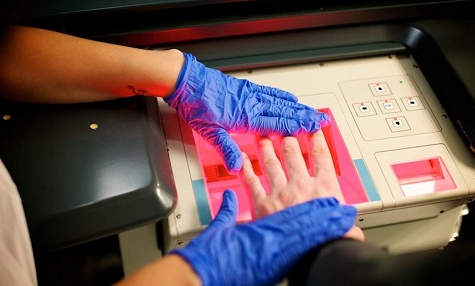Reader 1000: A Detector That Identifies Psychoactive Substance Use from Finger Sweat
According to a recent article published in the journal Analytical Toxicology, the UK has been testing a new type of electronic drug detector since the beginning of the year. This device, called the Reader 1000, can reportedly detect intoxication from cannabinoids and several other psychoactive substances with up to 99% accuracy, based on the latest test data.
The Reader 1000, which entered widespread testing in early March, uses a novel approach not previously seen in the drug testing market. Instead of lengthy DNA sample analysis, the device can quickly and accurately detect traces of marijuana, stimulants, and opioids simply by “reading” sweat from a subject’s fingertips.
How the Reader 1000 Works
The developers explain that the Reader 1000 identifies signs of cocaine, amphetamine, opioid, and marijuana use by analyzing sweat from a person’s fingers—whether the subject is alive or deceased—by detecting the presence of metabolites from these substances in the body. The entire process takes no more than 10 minutes, which is significantly faster than other available drug testing methods.
In practical tests, the device was able to detect cannabinoid use with 99% accuracy, cocaine with 95%, amphetamines with 93%, and opioids with 96%, both in living and recently deceased subjects. The device is also highly compact, making it portable and suitable for use outside of laboratory settings. Externally, it consists of a reader for collecting sweat from the subject’s fingers and a processor unit that analyzes the sample for traces of psychoactive substance metabolites.
Expert Endorsements and Potential Impact
The effectiveness of the device is supported by David Russell, a criminology and fingerprint analysis expert and emeritus professor at the University of East Anglia. According to Professor Russell, “This device could become the new standard for police and investigative drug testing equipment, not only in the UK but worldwide.”
He further notes, “The main advantage of the device is its speed and accuracy, which are unmatched by traditional testing techniques. With fingerprint scanning and machine analysis, precise information about the presence of drug metabolites is available in just 10 minutes.”
Coroners Confirm Effectiveness and Accuracy
Initial testing was conducted on 75 deceased subjects. The trials showed that there is enough bodily moisture on fresh corpses for the Reader 1000 to detect sweat samples from their fingers. The device’s results matched those of traditional forensic examinations, leading to plans for widespread adoption in major UK cities within the next year.
“In addition to testing living individuals, such as suspected drug-impaired drivers, the device has already proven itself among forensic pathologists, who recognize its effectiveness in quickly identifying psychoactive substance metabolites in the bodies of the deceased,” Russell adds. “Using this detector, medical professionals can more rapidly determine the presence of psychoactive substances in victims of violent crimes and incidents, helping police consider specific scenarios during official death investigations.”
Overall, the researchers note a significant reduction in the time police labs spend analyzing DNA from the deceased, thanks to the Reader 1000. “Blind testing has shown that the device provides highly accurate drug metabolite analysis, comparable to traditional methods, but with a clear speed advantage,” says Professor Russell. “Where a lab might need a day or more, the detector completes the task in just 10 minutes.”
The device has also proven itself in tests on living subjects, showing results that match blood and urine toxicology analyses for drug presence.
Future Prospects and Adoption
Dr. Paul Yates, head of Intelligent Fingerprinting—the company that developed the Reader 1000—believes that in the coming years, the device could largely replace traditional drug testing methods. “Our device has many advantages over older testing technologies,” Dr. Yates says in an interview. “In addition to speed and efficiency, the Reader 1000 is a more hygienic alternative to collecting urine and blood samples for lab analysis, which I believe will make it especially attractive to private companies and hospitals that regularly test employees and patients for psychoactive substance use.”
The new device is already being actively used in major hospitals, morgues, drug rehabilitation centers, and even some schools and universities in the UK. Authorities are also considering introducing the detector in prisons to combat drug use among inmates.



